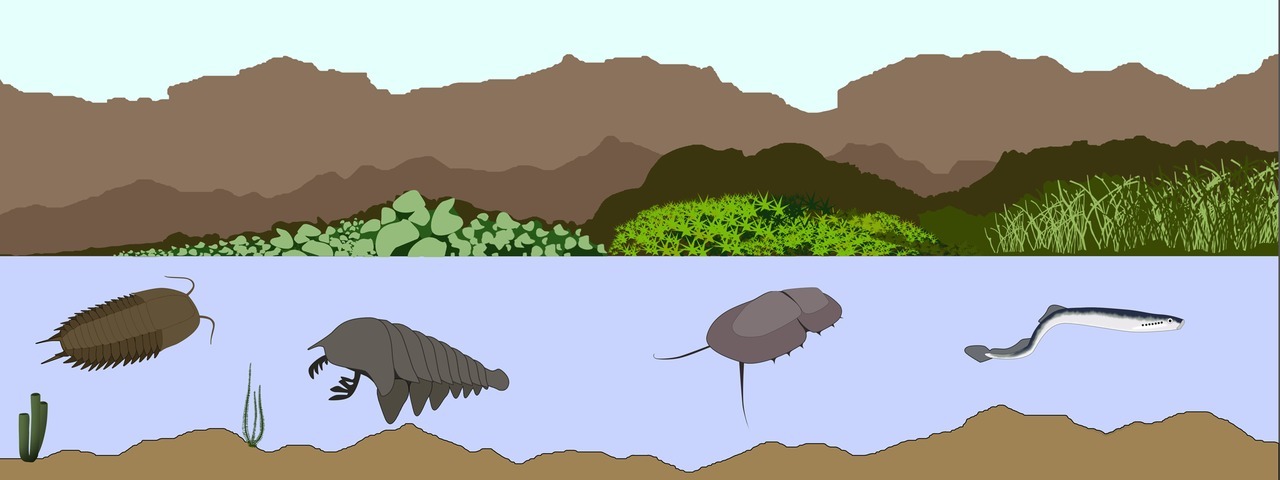23.9 Paleozoic era
During the Paleozoic era, life in the sea developed faster than it had during the previous billions of years. Invertebrate jellyfish were the most advanced animals in the early days of the Paleozoic. Mussels were the first organisms to develop a protective, hard shell. Crustaceans were the first organisms to develop articulated legs that allowed rapid movement on the seabed.
Competition between species made some species predators. The first vertebrates were primitive fish known as cartilagenous fish and bony fish. Sharks and rays belong to the group of cartilagenous fish. Their skeletal structure does not consist of bone, and they have no swim bladder.
 Sharks belong to the evolutionary group of cartilage: they do not have a bony spine or a swim bladder. Great white shark.
Sharks belong to the evolutionary group of cartilage: they do not have a bony spine or a swim bladder. Great white shark.
In addition to animals, fungi and plants developed in great strides druing the Paleozoic era. These organisms were the first to move to the surface of the Earth. During the transition to land, plants developed characteristics that allowed them to survive even with a small amount of water. Plant development progressed from algae to moss.
The ferns of the Paleozoic era had already developed vascular tissues. This was a crucial feature, as it made it possible for them to thrive on land.

In the Carboniferous era, about 300 million years ago, plants such as ferns, horsetails, and clubmosses dominated the forests of planet Earth. Large, fast-growing fern trees were buried in the ground over the course of millions of years. In time, these fern forests were transformed into coal under anaerobic conditions - the very same coal reserves that we still use today as an energy source!
Marine invertebrates of Paleozoic era:
 Life in the sea during Paleozoic era saw the development of trilobites (crustaceans, on the left) and long-extinct organisms (in the middle). The lampreys (on the right) are an ancient extant lineage of jawless fish.
Life in the sea during Paleozoic era saw the development of trilobites (crustaceans, on the left) and long-extinct organisms (in the middle). The lampreys (on the right) are an ancient extant lineage of jawless fish.
Vertebrates and flying insects develop:
